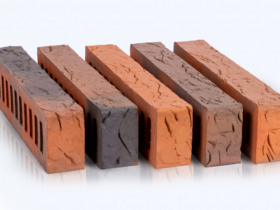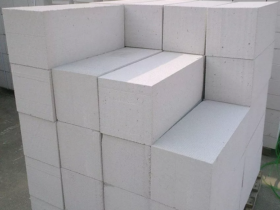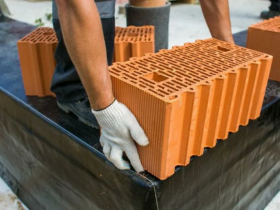Based on the fact that when the basement is used, materials of increased resistance and durability are used, a ceramic brick is needed for cladding: selected and well -burned; Silicate here is absolutely unusable because of its low moisture resistance. Closure made of facing brick is done with a neat filling of seams and under extensions. The walls lined with natural stone look good and protect the walls – a boot or label. High -quality stone cladding for many years do not require care, and over time give the house even special expressiveness. Concrete used for basements allows you to get a variety of decorative effects. Using wooden formwork, you can leave the imprints of the texture of the boards on the front surface. Having stuffed the racks on the formwork from the inside according to a pre -thought -out pattern, after concreting, get the surface under the ruble. Rubber, wooden or metal facial relief forms create a diverse pattern on the concrete surface. Basins, plastered with cement mortar, are treated under Bucharda, under the “fur coat”, under the RUST, etc. D. To increase decorative and protective qualities, plastered surfaces are faced with a glass tile of an Irisk or a ceramic “wild boar”. Wooden basements (from logs, Brusiev) are sheathed with a facing board on some relative from the lower part of the wall. This allows a certain extent to protect the main design from precipitation and regularly ventilate its entrance in the architectural appearance of an individual house, the entrance is one of the important elements. In the buildings of brick, block and panel design of the entrance in the simplest version, it is to framed the input (front) door with a platband from a brick released forward or from ceramic tiles laid out according to a certain pattern. A wooden porch is arranged in chopped and in stone manor houses. It, perhaps, is more than other parts, gives the house originality and originality.









